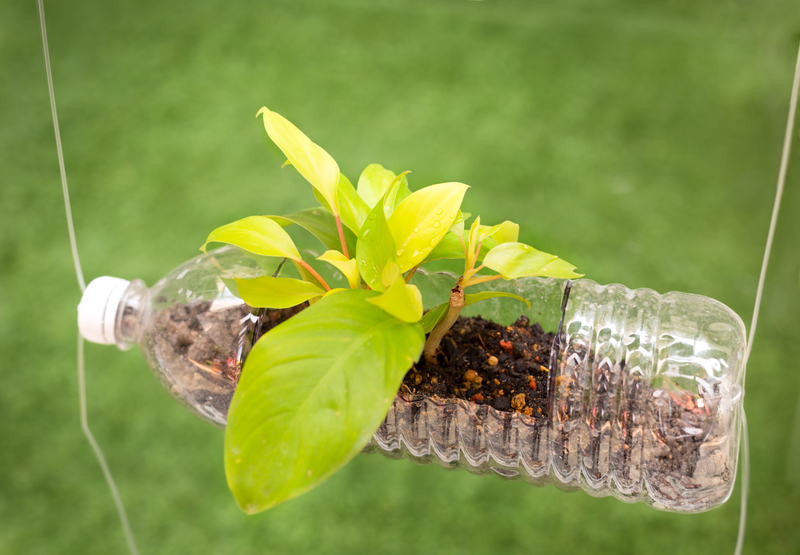Eco-Friendly Methods to Dispose of Used PPE Waste
The rampant use of Personal Protective Equipment (PPE) during the COVID-19 pandemic and in various industries has led to a concerning increase in PPE waste. Disposable gloves, masks, face shields, gowns, and other safety gear have become staples in healthcare, businesses, and everyday life. While these items are vital for public health, their improper disposal poses a significant threat to our environment. This comprehensive guide delves into eco-friendly methods to dispose of used PPE waste, promoting sustainability while keeping communities safe.

Understanding the Environmental Impact of PPE Waste
Before exploring green disposal solutions, it's vital to grasp the environmental consequences of mismanaged PPE waste:
- Non-biodegradable materials: Most PPE is made from plastic derivatives (like polypropylene, polyethylene) that can persist in landfills and oceans for centuries.
- Wildlife hazards: Improperly disposed masks and gloves often end up in ecosystems, where animals mistake them for food or become entangled, leading to injury or death.
- Microplastic pollution: PPE breaks down into tiny microplastics, infiltrating soil, water, and even our food supply--damaging health and biodiversity.
Best Eco-Friendly Methods to Dispose of Used PPE Waste
Efficient, safe, and sustainable disposal of used PPE starts with awareness and ends with action. Here are the most impactful methods, explained in detail:
1. Segregate PPE Waste at Source
One of the simplest ways to ensure PPE waste is managed responsibly is through proper segregation. This reduces contamination, streamlines recycling processes, and safeguards workers.
Key steps:
- Designate clearly labeled bins for PPE waste in homes, workplaces, and public spaces.
- Avoid mixing PPE with recyclables or organic waste to prevent contamination.
- Seal PPE in bags before discarding to minimize exposure to others.
2. Use Specialized Recycling Programs for PPE
Traditional municipal recycling does not accept most PPE due to potential contamination. However, innovative recycling schemes are emerging:
- TerraCycle PPE Recycling: Accepts gloves, masks, and face shields through special collection boxes. They clean, shred, and repurpose the plastic for new products.
- Hospital and laboratory programs: Some medical facilities partner with recyclers for bulk PPE waste.
- Check with local councils or waste management agencies for pilot PPE recycling initiatives in your area.
3. Switch to Biodegradable or Compostable PPE
A proactive approach to reducing waste is by choosing eco-friendly PPE products:
- Many companies now offer masks and gloves made from plant fibers, biodegradable polymers, or compostable materials.
- These can break down in industrial composting facilities, returning nutrients to the earth.
- Look for products with certifications such as ASTM D6400, EN 13432, or similar.
4. Thermal Treatment with Energy Recovery
Advanced facilities can safely incinerate used PPE at high temperatures, converting waste into energy rather than landfill mass. This is called waste-to-energy (WTE) processing.
- High heat destroys pathogens, reducing health risks.
- By capturing and using the resulting energy, the process can power industries or heat buildings.
5. Mechanical and Chemical Recycling of PPE Plastics
Some advanced recycling technologies enable mechanical granulation or chemical depolymerization of used PPE:
- Masks and gloves made from single-type plastics can be shredded, cleaned, and reprocessed into new products like benches, road surfaces, or packing materials.
- Chemical recycling breaks down polymers into base molecules, which are then rebuilt into virgin-quality plastic.
6. Safe Reuse when Appropriate
While not all PPE is suitable for reuse, some items (like high-quality face shields) can be sanitized:
- Follow manufacturer's orders for cleaning and disinfecting protocols.
- Encourage reuse when safety isn't compromised.
- Saves resources and reduces single-use waste output.
7. Community PPE Waste Collection Drives
Grassroots initiatives play a powerful role in sustainable PPE disposal:
- Organize community collection points for used masks and gloves.
- Partner with NGOs, municipalities, or local businesses to channel waste into proper recycling or treatment streams.
- Educate the community on safe handling and the environmental costs of sloppy disposal.
8. Support Upcycling and Creative Repurposing
For non-medical, non-contaminated PPE (like surplus ear loops or unused materials), creative upcycling offers an innovative alternative:
- Artists and designers repurpose PPE into art, fashion, and educational installations.
- Materials like elastic bands or fabric can be used for DIY projects when fully sanitized.
Best Practices for Eco-Friendly PPE Disposal
Implementing green PPE waste management is a collaborative effort that involves individuals, organizations, and governments. Here are some best practices to amplify your impact:
- Prioritize reduction: Use PPE only when necessary and opt for reusable options when possible.
- Stay informed: Keep up-to-date on local recycling options and new technologies for PPE processing.
- Practice safe disposal: Wear gloves and wash hands after handling used PPE waste to protect yourself and sanitation workers.
- Encourage innovation by supporting firms and communities developing eco-friendly PPE alternatives and disposal methods.
- Advocate for government and organizational policies that foster sustainable PPE management systems.
Challenges in Implementing Eco-Friendly PPE Waste Solutions
Although the need for eco-friendly PPE waste disposal is increasingly recognized, several hurdles remain:
- Lack of infrastructure: Not all regions have access to advanced recycling or waste-to-energy facilities.
- Cost barriers: Biodegradable PPE and specialized recycling can be more expensive than conventional alternatives.
- Contamination risks: PPE may carry pathogens, requiring careful handling and limiting recycling eligibility.
- Public awareness: Many are unaware of the environmental impact of PPE, or of available sustainable disposal options.

Innovative Developments in Green PPE Waste Disposal
Exciting advancements point toward a more sustainable future:
- Self-degrading PPE: Researchers are developing masks and gloves that break down naturally within weeks under ambient conditions.
- Enzyme-coated plastics: Additives to PPE materials can trigger rapid biodegradation when exposed to moisture and microbes.
- Decentralized mini-recyclers: Small-scale recycling units designed for hospitals and labs enable on-site PPE processing.
- Public-private partnerships: Cooperative ventures to scale up green PPE production and collection infrastructure worldwide.
Conclusion: Moving Towards a Greener Approach to PPE Waste
With billions of pieces disposed every day, minimizing the environmental impact of PPE waste is a pressing need. By adopting eco-friendly methods for PPE disposal--from source segregation and recycling, to composting, upcycling, and supporting new technologies--we protect the health of people and our planet alike.
Every action counts: Whether you're an individual, business, or part of a public institution, choosing sustainable options for PPE use and disposal plays a vital role in environmental conservation.
Spread awareness, demand innovation, and practice responsible disposal--because a safer world is a greener world.
Frequently Asked Questions About Green PPE Waste Disposal
-
Can I recycle my used masks and gloves at home?
Most curbside recycling does not accept PPE due to contamination risks. Instead, look for specialized mail-in or drop-off recycling programs in your area. -
What should I do with biodegradable PPE?
If certified compostable, dispose of it in an industrial composting stream. Do not compost at home unless you are certain your facility meets conditions for safe breakdown. -
Is burning PPE at home an eco-friendly option?
No. Burning PPE in uncontrolled environments gives off toxic fumes and endangers health. Only use certified waste-to-energy or incineration facilities that comply with emission controls. -
How can businesses reduce PPE waste sustainably?
Implement reusable PPE where possible, set up dedicated collection bins, partner with recycling companies, and educate staff on eco-friendly disposal practices.
For more information on sustainable PPE management in your area, contact your local environmental agency or municipal waste authority.
